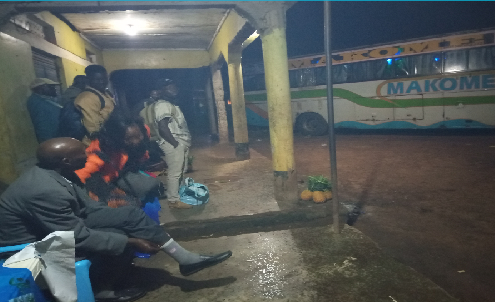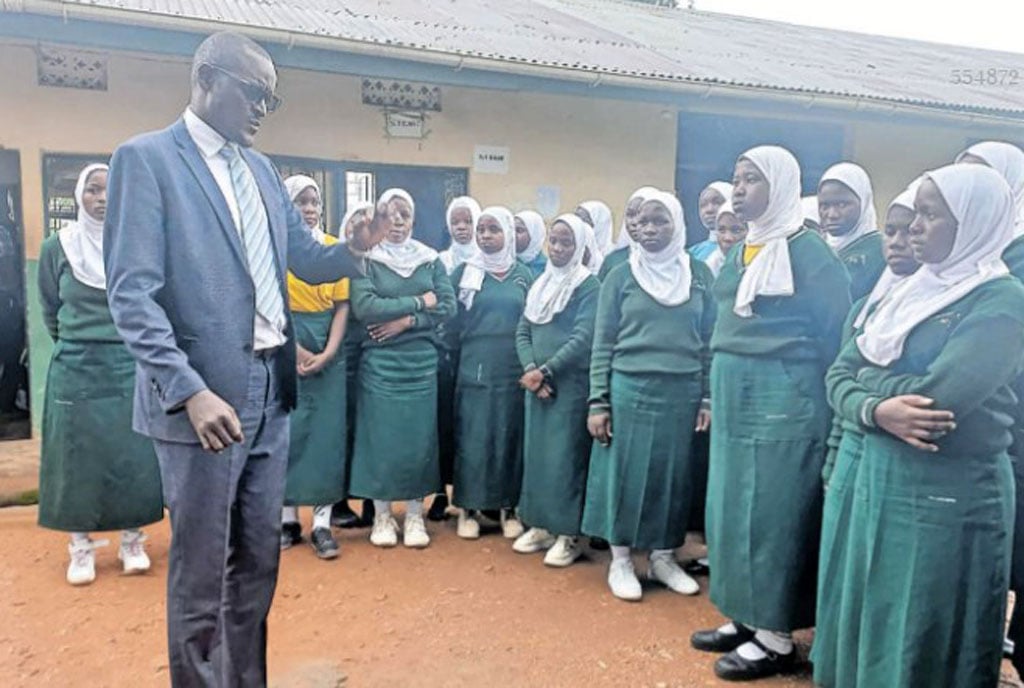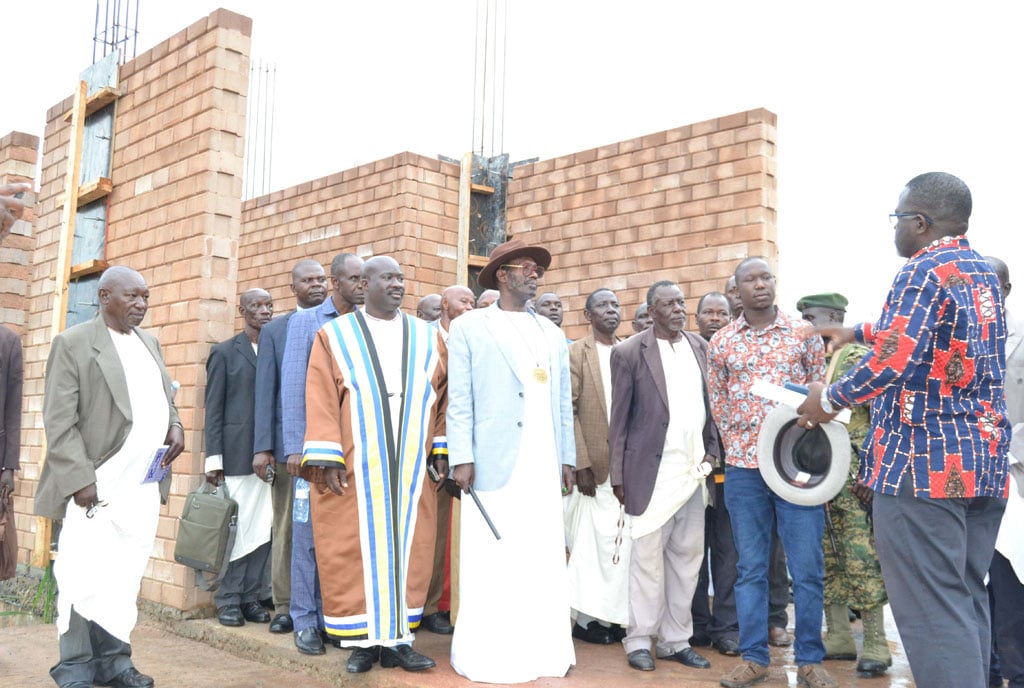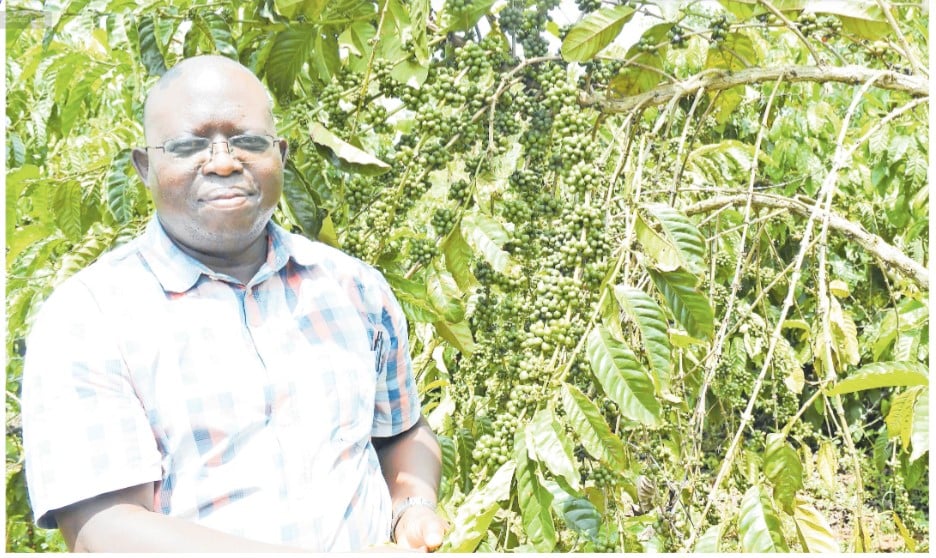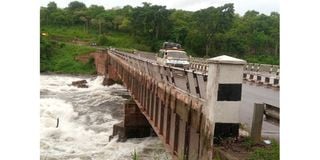
A commuter taxi crosses Karuma Bridge. PHOTO | BILL OKETCH
Lawmakers from northern Uganda have expressed fears that a total closure of Karuma Bridge to the public could significantly impede transport and trade in the region.
“Unfortunately, the options have not come out clearly, we made suggestions that Uganda National Roads Authority (Unra) needs to urgently fix the Masindi Port Ferry because it is too small yet that is the shortest route,” Ms Lucy Akello, the Amuru Woman lawmaker, said on Friday.
Speaking on the sidelines of the regional parliamentary sitting that ended at Kaunda Grounds in Gulu City on Friday, Ms Akello said a non-committal stance by Mr Musa Ecweru, the junior Works and Transport minister, on what options are available upon closing Karuma Bridge hardly inspires hope. This was after minister Ecweru appeared before the House.
“We also asked the government to scrap the charges on motorists who use the tourism route through Murchison Falls National Park, but there was also no commitment on it because it involves revenue that accrues to Uganda Wildlife Authority,” Ms Akello told Sunday Monitor, adding, “I am hoping when they sit in Cabinet [tomorrow], they will come with something tangible, because we are just floating now.”
Mr Martin Ojara Mapenduzi, the Bardege-Layibi Division lawmaker, says while they had hoped to convince the government to allow the temporary use of the Karuma Hydropower Dam’s passage, it lacks the necessary security features to protect motorists.
“When it is closed completely, people will have to look for alternative routes which are too far and they are costly for our people,” he observed, adding, “It is going to be heavy on the business communities and the citizens and so the question should be how quickly the bridge is going to be repaired.”
Stalled
The repair works have taken longer than planned after the government initially planned to see them through in three months. On Wednesday, Mr Ecweru told Parliament, during the regional parliamentary sitting in Gulu City, that the bridge will be closed to all vehicles irrespective of size and weight. He added that the total closure is to allow engineers to conduct remedial works on the bridge’s decks (surface) after complete repairs of the pillars underneath the bridge.
“What is true is that, in the next few days, the team will now be working on the surface and I was directed to announce the permanent closure of the bridge in a few weeks so that the surface is also worked on,” he disclosed.
The minister appeared before the House to explain why no work on the bridge had started even after the three-month window requested by Unra to do the repairs had elapsed.
He said, “This pronouncement will inconvenience many people since no vehicle will cross the bridge, but we have chosen the safety and security of our people’s lives and properties rather than leaving them to risk their lives by continuing to use the bridge.”
While the bridge is being worked on, the government, according to Mr Ecweru, will spare no effort to secure a new suspension bridge.
“We are assessing the life of the old bridge, but we are also finalising on securing a new bridge at Karuma,” he revealed.
The shutdown is expected to further exacerbate woes of motorists, travellers and businesspersons from the north who use the bridge to access the Ugandan capital city of Kampala and other regions of the country. To compound matters, the government has failed to articulate cheaper and easier alternative routes that can be used.
Alternatives
Considering the huge costs and time consumption that will come with using alternative routes once Karuma closes its doors, Linus Ngompek, the Kibanda North County lawmaker, tasked the Works ministry to negotiate with their counterparts of the Energy ministry to allow travellers to move through the Karuma Hydropower dam.
“In the project area where the dam has been constructed, there is an alternative bridge where the dam’s spill gates lie, connecting Oyam to Karuma,” he disclosed, adding, “We want the Ministry of Energy to allow smaller light vehicles to use that bridge temporarily while Karuma Bridge is closed permanently.”
Okello Nelson, the Maruzi North County lawmaker who doubles as a member of the Parliament’s Committee for Physical Infrastructure, told the House that the committee’s recent assessment of the bridge turned up startling findings. The bridge’s deck was completely worn out, with cracks stretching underneath it. He also revealed that while some of the pillars had significantly deteriorated, only a platform to necessitate movement under the bridge had been established by the contractor.
Mr Okello said the Works ministry should ensure access to easier and cheaper options to cross the Nile River before the bridge is closed. According to him, the options of Masindi Port Ferry through Lira and Apac were irrelevant since the ferry is too old and much smaller to sustain the pressure once traffic is diverted there.
“As I talk now, the Masindi Port Ferry which is the only option is very small and too old, and people are sleeping there for days before crossing while animals in transit are dying,” he revealed.
Averting danger
Meanwhile, House Speaker Anita Among gave Mr Ecweru a fortnight to furnish Parliament with a comprehensive report on how the ministry will handle the situation around Karuma and other road infrastructural projects in the north.
“We need to work on the Karuma Bridge. Let the Kiteezi scenario not come to Karuma. We need an action taken on the road urgently,” she decreed.
When the government announced the temporary closure of the Karuma Bridge due to its defects and for reconstruction purposes in May, heavy-duty vehicles travelling from Lira, Gulu or West Nile to Kampala, and vice versa, were diverted at River Kafu via the park. Those from Lira to Kampala, alternatively were told to pass through Lira-Dokolo-Soroti-Kumi-Pallisa-Tirinyi-Nakalama via Iganga or vice versa.
Early this past week, on Wednesday, the bus operators under the umbrella of the United Bus Owners Association (UBOA) threatened to lay down their tools due to the delay of works at Karuma Bridge. The association leadership said passengers going to Lira from Kampala were forced to travel through Jinja, Pallisa and Soroti and then connect to Lira where fuel consumption doubled and yet they cannot increase transport fares to match the additional cost they are incurring.
The association also demanded that Unra allow them to continue offloading passengers on either side of the bridge and connect with lighter vehicles or close the bridge completely to all users without segregation so that they all use the longer routes, among others.
House Committee report
On Wednesday, the House Committee on Physical Infrastructure tabled a report read by its vice chair, Tonny Awany. The report detailed how the partially closed 61-year-old Karuma Bridge has impacted trade and mobility across the greater northern region.
“Currently, heavy goods vehicles have been diverted to alternative routes, including through the Murchison Falls National Park, through eastern Uganda, and Masindi Port, thereby increasing the travel time, cost of transportation, and inconveniences to road users,” the report says in part.
The Karuma Bridge is a crucial artery for commerce in West Nile and northern Uganda areas, facilitating the movement of goods and services between regions while supporting numerous businesses.
On August 3, the Uganda National Chamber of Commerce and Industry (UNCCI), Lira Branch, wrote to Unra expressing concern about the significant bottlenecks encountered in transporting goods and services caused by the temporary closure of the bridge. This, UNCCI added, was especially so for heavy trucks and buses.
At the time of the temporary closure, Mr Awany told Parliament that the Works ministry had recommended that goods and passengers use the Nakasongola-Zengebe road. However, this route was affected due to flooding and became impassable.
Disruptions
Consequently, due to disruptions in supply chains, it was reported that the cost of doing business had quadrupled in northern Ugandan sub-regions.
Karuma Bridge, whose construction was completed and commissioned in 1963, is a major link and gateway between the mid-western and northern Uganda and West Nile sub-regions.
According to Unra, the repair works of the bridge are ongoing after its Shs6.8 billion contract was recently handed over to the UPDF’s National Enterprise Corporation (NEC) and China Railway 7 Group.
However, the committee report points out that even if the repair works are done, it can only sustain the bridge for not more than three years, meaning that the government must quickly embark on building a new bridge.
According to the report, the government will need to urgently consider building a new bridge to replace the old one under restoration not beyond two years. Short of that, the region will be cut off completely.

